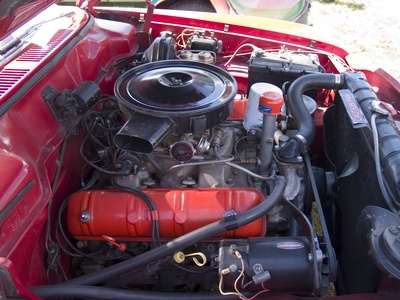
Troubleshooting and repairing a 2.5-liter-engine in an older model S-10 Chevy that starts then dies may require you to replace a number of parts and make several adjustments, or it may be as simple as basic maintenance. The fact that the engine starts and then dies indicates that there's a fuel issue. That means you want to begin your inspection around the carburetor. There are several troubleshooting tests, the results of which will tell you why your S-10 is not getting gasoline to the engine.
Add gasoline. Sometimes the fuel gauge gets stuck on S-10s and you do not realize it. Unfortunately, there is still enough gasoline in the tank to allow fumes to drift into the fuel line and the Chevy will fire for a moment and then die and you think it has gas in the tank.

Remove the fuel filter which is on the fuel line. There is a casing with two hose clamps. Inside the casing is the filter. Remove it and reattach the casing to the fuel line with the hose clamps. Start the engine. If it continues to run without dying, you have a clogged fuel filter. You do not want to run your Chevy without a fuel filter for long or you risk damaging the engine, but this test will tell you if the fuel filter is bad.

Check the fuel pump and the integrated relay control module. With one test, you can diagnose both. Remove the relay running from the fuel pump to the IRCM from the IRCM box. Attach your electric relay test cable to the electric relay module running to the pump and attach the other end to the positive terminal of your battery. If the fuel pump is good, you will hear it begin running and you can assume the problem may be your IRCM. If you do not hear the pump run, you have a bad pump.
Remove the pan to your air filter from the top of your carburetor. Have someone step on the pedal repeatedly while you look down into the carburetor. Make certain the choke is not stuck closed.
Replace the entire fuel line if all else fails.